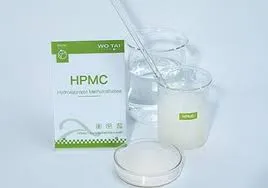
Nov . 26, 2024 03:04 Back to list
Exploring the Chemical Structure of Hydroxypropyl Methylcellulose for Diverse Applications
Understanding the Chemical Structure of HPMC A Comprehensive Overview
Hydroxypropyl Methylcellulose (HPMC) is a semi-synthetic polymer derived from cellulose. It plays a significant role in various industries, notably in pharmaceuticals, food production, cosmetics, and construction. Its unique chemical structure gives it its remarkable properties, such as thickening, emulsifying, and film-forming capabilities. Elucidating the chemical structure of HPMC can provide deeper insights into its functionalities and applications.
The backbone of HPMC originates from cellulose, which consists of a linear chain of β-D-glucose units linked by β(1→4) glycosidic bonds. Cellulose is a natural polysaccharide found abundantly in plant cell walls. To produce HPMC, cellulose undergoes a series of chemical modifications that include etherification, specifically with propylene oxide and methyl chloride. This process introduces hydroxypropyl and methoxy functional groups into the cellulose backbone, resulting in the hybrid polymer known as HPMC.
Understanding the Chemical Structure of HPMC A Comprehensive Overview
In the structure of HPMC, the hydroxypropyl group imparts hydrophilicity to the molecule, enhancing its solubility in water, while the methoxy group contributes to increased hydrophobicity. This dual nature enables HPMC to form stable solutions across various pH levels and temperatures. The balance between these groups influences the viscosity and gel-forming ability of HPMC, making it a versatile agent in numerous formulations.
chemical structure of hpmc

The molecular weight of HPMC can also vary significantly, which affects its viscosity and consistency in solutions. Higher molecular weight HPMC tends to form more viscous solutions, making it ideal for applications that require thickening, such as in paints and coatings. Conversely, lower molecular weight variants are often utilized in pharmaceutical formulations due to their ease of processing and ability to deliver medication more effectively.
One of the most notable features of HPMC is its ability to form films. This characteristic is attributed to its unique chemical structure, which allows chains of HPMC molecules to align and create a cohesive film upon drying. This property is particularly beneficial in the pharmaceutical industry, where HPMC is commonly used in tablet coatings and controlled-release formulations. The film-forming capability helps protect active ingredients from degradation, enhances the aesthetic properties of tablets, and allows for sustained release profiles.
Moreover, the use of HPMC extends further into the food industry, where it serves as a stabilizer, emulsifier, and thickening agent in various products, including sauces, dressings, and dairy items. The molecular interactions facilitated by HPMC also contribute to improved texture and sensory attributes, enhancing the overall consumer experience.
In the realm of construction, HPMC is used as an additive in cement-based materials. Its incorporation improves workability, water retention, and adhesion of mortars, making it crucial for achieving desired performance characteristics in construction applications.
In conclusion, the chemical structure of Hydroxypropyl Methylcellulose (HPMC) is a remarkable blend of cellulose chains modified through etherification. This results in a polymer with essential properties that cater to the diverse needs of multiple industries. Understanding the structure helps in comprehending the behavior of HPMC in different environments and applications, reinforcing its position as an invaluable ingredient in pharmaceuticals, food, cosmetics, and construction.
-
Premium Cellosize HEC: Hydroxyethyl Cellulose for Sale
NewsSep.01,2025
-
Premium Cellulose Ether: Effective Liquid Thickener & Stabilizer
NewsAug.31,2025
-
HPMC for Tile Adhesive: Superior Bonding & Workability
NewsAug.30,2025
-
Premium Cellulose Ether: Effective Liquid Thickener Solutions
NewsAug.29,2025
-
HPMC for Tile Adhesive: Enhanced Bonding & Workability
NewsAug.28,2025
-
tile-bonding-additives-for-stronger-bonds
NewsAug.22,2025







